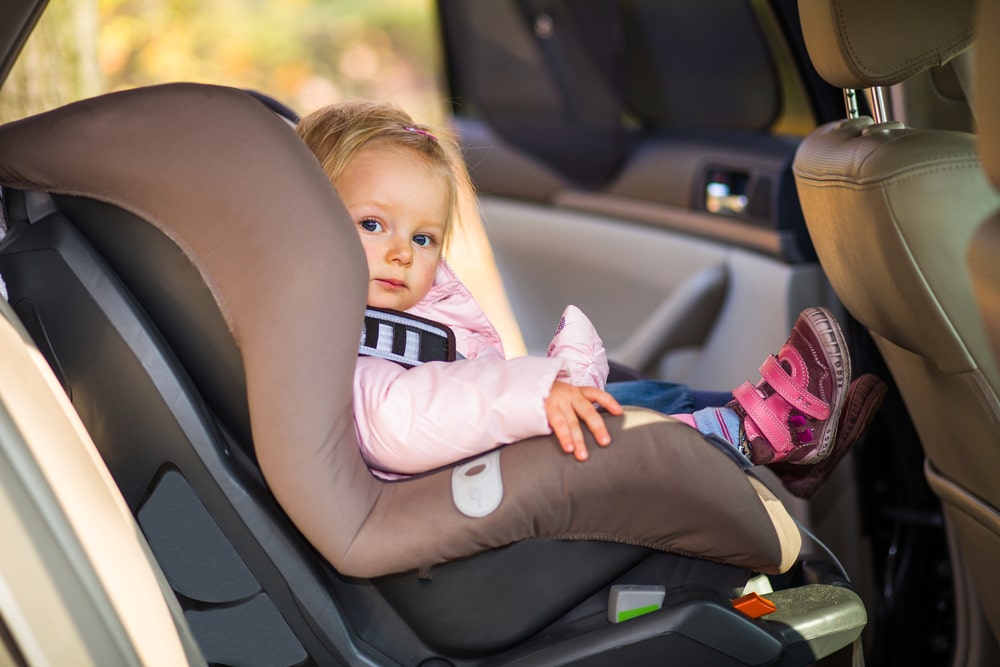
- The Savvy Promise
At Savvy, our mission is to empower you to make informed financial choices. While we maintain stringent editorial standards, this article may include mentions of products offered by our partners. Here’s how we generate income.
Car safety is of paramount importance when travelling with infants and young children. One crucial aspect of child car safety is determining the appropriate time to transition a baby from a rear-facing to a forward-facing car seat.
In this comprehensive guide, we explore the weight requirements and best practices for babies facing forward in a car seat in Australia, then take a look at other car seat rules and road safety measures for children to help keep them protected.
Why are rear-facing car seats important for babies?
Before discussing the requirements for forward-facing seats, it’s crucial to understand why rear-facing car seats are recommended for infants and young children.
Babies have larger heads and weaker neck muscles than older children and adults, which makes them more vulnerable to injury in the case of a crash. Rear-facing car seats provide superior protection in such circumstances. Its position disperses the impact forces over the child's entire back, neck and head, acting like a shock absorber and significantly reducing the risk of severe injury.
Australian child restraint guidelines highly recommend using a rear-facing car seat for as long as possible, at least until the child reaches the maximum weight or height limit allowed by the manufacturer. Furthermore, all child seats used must meet the requirements of the AS/NZS 1754 standard, which is in place to ensure children have the maximum level of protection when travelling in a car.
What are the age and weight requirements for babies to face forward in a car in Australia?
Laws relating to child and baby seats in Australia are based on age and height, rather than weight, and may differ between states and territories (although they’re largely consistent). As of April 2024, wherever you are in Australia, children must remain in a rear-facing car seat until they reach six months old. It’s illegal to place a child under six months in a forward-facing car seat.
Historically, guidelines stated that babies should be at least 8kg before moving them into a front-facing car seat. Under current age-based guidelines introduced in 2010, after six months, parents can exercise their discretion as to whether to use a rear-facing seat or a front-facing seat with an inbuilt harness. This remains in place until the child reaches four years of age, at which point they must use a forward-facing seat, either with an inbuilt harness or an otherwise approved booster seat.
When can a child sit without a car seat?
Australian law requires all children under seven years old to be securely restrained in a suitable child restraint appropriate for their age and size. Different types of car seats cater to various age groups:
- Up to 6 months: use a rear-facing infant seat only, never in the front seat.
- 6 months to 4 years: use a rear-facing seat for as long as possible and alternatively a forward-facing child safety seat with an inbuilt harness, never in the front seat.
- 4 to 7 years: use a forward-facing seat with harness or booster seat and the front seat only if all other seats are occupied by children under seven in restraints.
- 7 years and up: use a child-safety seat or booster seat or properly adjusted seatbelt. While legally they can go without a car seat from age seven, children need to be about 145cm tall to safely wear an adult seatbelt.
It's crucial to choose the right car seat for your child's specific needs and ensure it is correctly installed. Around 90% of children’s car seats are installed incorrectly, putting the child’s safety at risk while in the car. Always follow the manufacturer's instructions for securing the car seat properly and ensure it's compatible with your vehicle.
When can I put my child in the front seat of my car?
Once again, laws are enforced by state and territory governments in this area. However, in most cases, you cannot seat a child under the age of four in the front seat of a vehicle with two or more rows of seats. If your car only has one row, an approved, age-appropriate car seat must be used to seat them in the front.
From the ages of four to seven, the same rules apply unless all available seats in other rows are taken up by other children under the age of seven. In this instance, an approved, age-appropriate car seat must be used if they sit in the front.
How else can I keep my child safe in and around cars?
Choose a safe family car
Choosing the right vehicle plays a crucial role in child safety. Look for cars with:
- Strong safety ratings: research the car's performance in independent crash tests conducted by organisations like ANCAP (Australasian New Car Assessment Program).
- Advanced safety features: consider safety features like automatic emergency braking, lane departure warning and blind-spot monitoring, which can offer additional protection, as well as features like child locks.
- Adequate space and features: choose a car that comfortably accommodates your family's needs, including proper car seat installation and storage space for essential items.
Teach them the rules of the road
In 2018, 29% of children killed in road accidents were pedestrians. Familiarising your children with the rules of the road can help to protect them from potential hazards and accidents. This includes:
- Education: educate your children about the importance of looking both ways before crossing the street, using pedestrian crossings and signals, and staying on footpath whenever possible.
- Safe zones: designating safe play areas away from driveways and roads can help minimise the risk of accidents involving moving vehicles.
- Oversight: regular supervision and awareness of children's activities outdoors are crucial for preventing accidents.
- Cycling safety: if your child rides a bike, they must wear a properly fitted helmet by law and you should teach them essential cycling skills like using hand signals, following traffic rules and staying alert to their surroundings.
Be aware of driveway dangers
Driveways can be a hidden danger zone for young children, especially when cars are present. On average, seven children a year in Australia are killed and 60 seriously injured due to incidents in driveways. Here are some essential steps to help keep your children safe:
- Create physical barriers: install driveway gates to prevent children from wandering into the path of moving vehicles.
- Develop safe habits: never leave children unattended when a car is present or parked in the driveway.
- Driver awareness: always perform a visual check around your vehicle before driving away.
- Educate older children about safe driving practices: if your teenager is learning to drive, teach them about the dangers of driveway incidents and the importance of checking for children before moving the car.
Did you find this page helpful?
This guide provides general information and does not consider your individual needs, finances or objectives. We do not make any recommendation or suggestion about which product is best for you based on your specific situation and we do not compare all companies in the market, or all products offered by all companies. It’s always important to consider whether professional financial, legal or taxation advice is appropriate for you before choosing or purchasing a financial product.
The content on our website is produced by experts in the field of finance and reviewed as part of our editorial guidelines. We endeavour to keep all information across our site updated with accurate information.
Approval for car loans is always subject to our lender’s terms, conditions and qualification criteria. Lenders will undertake a credit check in line with responsible lending obligations to help determine whether you’re in a position to take on the loan you’re applying for.
The interest rate, comparison rate, fees and monthly repayments will depend on factors specific to your profile, such as your financial situation, as well others, such as the loan’s size and your chosen repayment term. Costs such as broker fees, redraw fees or early repayment fees, and cost savings such as fee waivers, aren’t included in the comparison rate but may influence the cost of the loan. Different terms, fees or other loan amounts may result in a different comparison rate.








